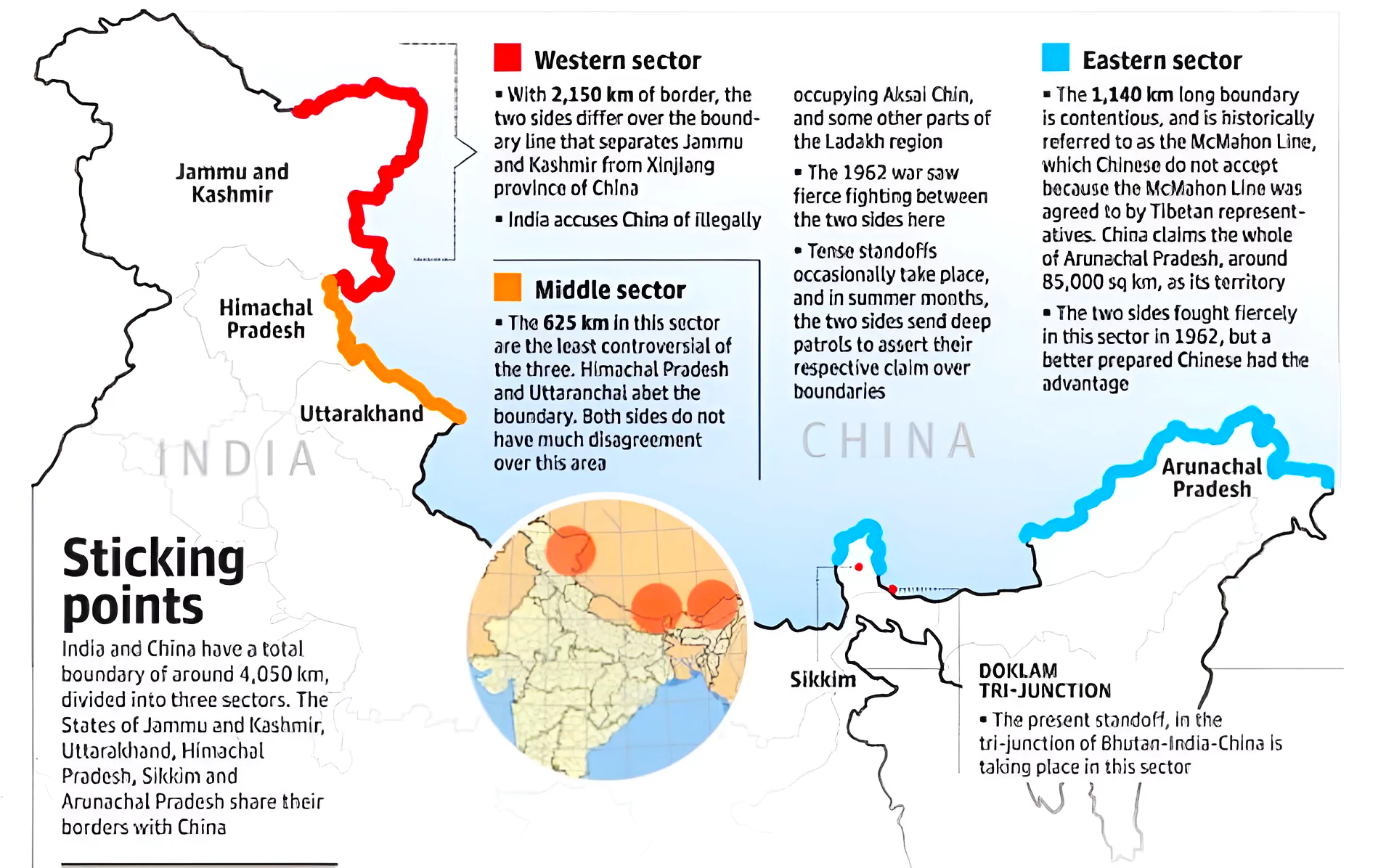Context:
This article raises security concerns for India over the development of Border Defence Villages along the LAC by China.
Line of Actual Control (LAC)
- The exact extent of the Line of Actual Control (LAC) (a demarcation line that separates the disputed regions of India and China) has been a source of contention between the two countries for years.
- India considers it to be 3,488 km long, while China says it is around 2,000 km.

About Xiaokang Border Defence Villages
- Construction by China: China has been constructing 628 such Xiaokang or “well-off villages” along India’s borders with the Tibet Autonomous Region for over five years now.
- The structures include mostly double-storey, large and spacious buildings. The construction for most of these planned villages has already been completed.
- In Areas: These have been constructed all along the Line of Actual Control (LAC), including the Ladakh and Arunachal Pradesh borders.
- Purpose: The exact purposes have remained unclear, but they were understood to be dual-use infrastructure. They can be used both for civil and military purposes.
- Concern: The use of infrastructure for military purposes has thus been a concern from a defense perspective.
- The strategic community looks at it as a way to assert Chinese claims over certain areas along LAC.
- Associated Law: A new law on China’s land borders was brought into effect from January 1, 2022 and was passed in 2021 for the “protection and exploitation of the country’s land border areas”.
Other Infrastructure Developed by China Along India’s Northeast
- Consistent Development: China has been constantly building infrastructure all along the LAC, including in Arunachal Pradesh’s Tawang region and the Siang Valley.
- Construction of: New roads and bridges to improve connectivity through the passes.
India’s Response To China’s Xiaokang Border Defence Villages
- Vibrant Villages Programme: The Indian government announced the Vibrant Villages Programme in 2022 to develop its border villages into modern villages with all amenities and as tourist attractions.
- Aim: Under the programme, India plans to develop border villages into modern villages.
- The programme builds on the existing Border Area Development Programme (BADP) under the Union Ministry of Home Affairs.
- Pilot Project: At least 17 LAC border villages in Ladakh, Himachal Pradesh, Uttarakhand, Sikkim and Arunachal Pradesh, have been selected for development as a pilot project.
- Focus on Arunachal Pradesh: Villages in the eastern part of the state and the Tawang region have been focused.
- Connectivity Improvement: India has also focused on strengthening its border infrastructure and improving forward connectivity with the construction of new roads, bridges, and helipads.
- There has also been a push to develop alternate routes to the LAC and improve inter-valley connectivity in the northeast.
Conclusion
The occupation of Xiaokang border defence villages by China raises significant concerns about security and territorial integrity. Although India is also working in the development of bordering areas, it needs to intensify the construction and connectivity program and be prepared for any undeviating situations.
Also Read: Smart Fencing For India-Myanmar Border Management
![]() 16 Feb 2024
16 Feb 2024


